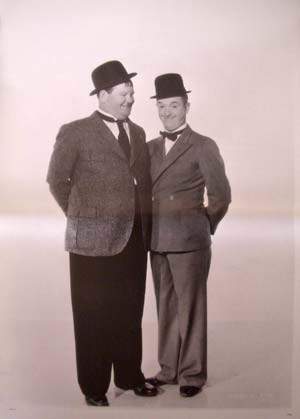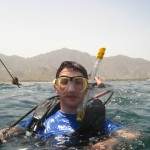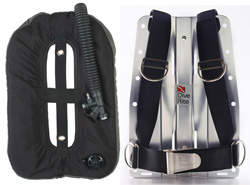You’re thinking about buying a BC. You’ve got 100 dives under your belt, or perhaps you’ve just done your PADI Open Water. You believe your BC will be critical building-block piece of your scuba rig and buying your own instead of renting will help you progress as a diver. Here’s a tip: don’t buy a (jacket) BC.
This is another tip in the category of “what I wish I’d known” back when I bought my original scuba equipment. Your average dive magazine and dive shop are filled with ads for fancy jacket BCs that have all sorts of bells and whistles – sometimes literally! Yet every technical diver I know including myself uses a different system called a Backplate & Wing (or BP&W) that is both stronger and cheaper and easier to use. Why? Keep reading.
Jacket BCs
 Jacket-style BCs are what you see most in recreational scuba diving magazines. A jacket BC is a nylon fabric vest attached to a plastic backpiece. The buoyancy function of the jacket comes from inflation cells usually located under the arms and up the back. You can attach a single tank to the back via an integrated strap. Jacket-style BCs are common items in your local scuba store and usually command an entire rack of hangers to themselves. Jacket-style BCs are what you would rent at a resort or in a PADI diving class.
Jacket-style BCs are what you see most in recreational scuba diving magazines. A jacket BC is a nylon fabric vest attached to a plastic backpiece. The buoyancy function of the jacket comes from inflation cells usually located under the arms and up the back. You can attach a single tank to the back via an integrated strap. Jacket-style BCs are common items in your local scuba store and usually command an entire rack of hangers to themselves. Jacket-style BCs are what you would rent at a resort or in a PADI diving class.
What Jacket BCs do well: quick easy sizing
 Jacket BCs come in sizes like S, M, and L. These three sizes will cover 99.9% of the human population and are recognizable by anyone that’s ever worn a t-shirt. Cinch the velcro cummerbun as tight as you can and presto! You’ve got a BC that pretty much fits with less than 30 seconds of hassle. This makes jacket BCs perfect for use in rental shops and resorts where stocking a large variety of sizes would be too expensive.
Jacket BCs come in sizes like S, M, and L. These three sizes will cover 99.9% of the human population and are recognizable by anyone that’s ever worn a t-shirt. Cinch the velcro cummerbun as tight as you can and presto! You’ve got a BC that pretty much fits with less than 30 seconds of hassle. This makes jacket BCs perfect for use in rental shops and resorts where stocking a large variety of sizes would be too expensive.
However, if you are buying your own BC you don’t care about needing to cover a large variety of sizes. All you care about is your size. You are not trying to open a rental shop. The ideal BC is one that fits you perfectly.
Why is fit so important? Jacket BCs are like an oversize set of pants you hold up with a belt: sure they cover your ass but you’re swimming (in this case literally) around inside of them. And in this case, you use them to attach all sorts of heavy equipment to your body. When under water, you want your tank and weights to be snug to your body so that they are not sliding around every time you turn or look around. A jacket BC cannot do this well.
What Jacket BCs do well: heads-up flotation on the surface
 A jacket BC puts the inflation cells under your arms. This can be useful because you can super-inflate the cells on the surface and they will hold you in an easy vertical position with your face way out of the water. This is perfect for beginner divers where being under water is the “scary” zone and the surface is the “safe” zone. If they are not comfortable with a dive or if they need to discuss something with their instructor they can hang out on the surface in an inflated armchair.
A jacket BC puts the inflation cells under your arms. This can be useful because you can super-inflate the cells on the surface and they will hold you in an easy vertical position with your face way out of the water. This is perfect for beginner divers where being under water is the “scary” zone and the surface is the “safe” zone. If they are not comfortable with a dive or if they need to discuss something with their instructor they can hang out on the surface in an inflated armchair.
Sounds good right? Forget it. The more diving you do, the more comfortable you become with being under water. The surface zone has breaking waves, boats with ladders that will whack you on the head, low-PO2 ambient air — all sorts of drawbacks! Who wants to hang out on the surface?
Plus, inflation cells under your arms get in your way when inflated. As your diving skill increases you will likely be taking more things underwater with you: cameras, lobster bags, extra tanks, scooters, or even an ironing board. Your chest and arm areas become your “work zone” for attaching stuff. You need to keep this area clean and not puffed-up with a vest.
Furthermore, jacket inflation widens your profile in the water. You want to be as streamlined as possible underwater so that you expend less effort (and consume less gas) when swimming and are less susceptible to the pull of current. The under-arm inflation cells on a jacket BC will scoop water when swimming and cause drag.
So if jacket BCs are so bad, what’s better?
Backplate & Wing

A backplate & wing (or BP&W) is a flat rectangular metal plate that you attach to your back using a nylon webbing strap. Buoyancy comes from a doughnut-shaped cell (the “wing”) that goes on your back between the plate and your tank. The whole thing resembles a parachute harness. If your local scuba store doesn’t carry plates or wings you can easily order them online.
What BP&W does well: fit
The harness on a backplate is designed to be tight. You should be able to stick a couple of fingers between your suit and the harness straps, but that’s it.
Under water this means you and your scuba rig melded together as one piece. If you tilt downwards to look under a coral head, your rig stays tightly in place and doesn’t flop suddenly forwards and whack you on your head (done that!). If you tilt to the side, the rig stays fixed in the middle of your back instead of sliding off like a deckchair on the Titanic. A nice tight rig means you stop thinking about even having a rig attached so you can start focusing on the rest of your diving.
What BP&W does well: simplicity
 A metal plate to hold things, a nylon strap to attach it to your back, and one inflation cell — what could be simpler? The plate and strap are near-indestructible but if you need to fix something you can do it with parts from a hardware store. The entire setup is open and obvious.
A metal plate to hold things, a nylon strap to attach it to your back, and one inflation cell — what could be simpler? The plate and strap are near-indestructible but if you need to fix something you can do it with parts from a hardware store. The entire setup is open and obvious.
Under water a simple setup is crucial because you need to perform actions quickly and get them right the first time. You can’t see your own body to guide your hands because the mask interferes with your peripheral vision. If you’re wearing cold-water gloves or a wet/drysuit you also don’t have your sense of feel and the dexterity required to grope your way though a complex attachment or piece of equipment. A plate & harness excels here because it’s as simple as possible, and no simpler.
What BP&W does well: strength
 Extreme strength may not seem necessary for the beginner or intermediate diver. You’re not attaching two hundred pounds of steel doubles tanks and lead weight. However, it’s good to know that your standard harness and plate can easily do that if you need it. The plate is steel or aluminum. The harness is 2-inch wide nylon, sometimes stiffened with resin. Buckles and attachment points are stainless steel.
Extreme strength may not seem necessary for the beginner or intermediate diver. You’re not attaching two hundred pounds of steel doubles tanks and lead weight. However, it’s good to know that your standard harness and plate can easily do that if you need it. The plate is steel or aluminum. The harness is 2-inch wide nylon, sometimes stiffened with resin. Buckles and attachment points are stainless steel.
You may not need all this strength, but it’s there if you need it. Your standard jacket BC with velcro attachments and thin nylon fabric will tear or drop that underwater camera when you least want it…like on the deck of the boat when you’re getting out in heavy seas.
Technical divers will also site an additional list of reasons why a BP&W is better than a jacket BC, for example that it provides standardization of equipment so that buddies on a diving team are guaranteed to know their partner’s rig as well as they know their own.
What About Cost?
One of the things I like about diving is that good technical equipment often costs less than the highly-advertised gear you see in scuba magazines. Let’s see if this is true for backplates and jacket BCs too.
Jacket BC Costs
These prices are from LeisurePro. I tried to pick the model from each manufacturer that best represented a high-end recreational BC, the kind of thing you would want to buy for yourself (versus rent at a resort).
| Brand | Model | Cost |
|---|---|---|
| Cressi-sub | Aquaride | $400 |
| Mares | Dragon | $550 |
| Tusa | Platina Evolution | $280 |
| Aeris | Atmos LX | $550 |
| Mares | Probe LX | $570 |
| Average | $470 |
BP&W Costs
You can buy a backplate, harness, and wing separately if you wish. You can also often find them sold together as a package deal. If you buy separately, you should get a tank strap to attach the tank to your plate.
| Backplate | Harness | Wing | Tank Strap | |
|---|---|---|---|---|
| DiveRite | $87 | $35 |
$350 | $32 |
| OxyCheq | $38 |
$272 | ||
| Salvo | $140 | $350 | $28 | |
| Average | $113 | $37 | $291 | $30 |
Total price of the average piece prices: $471!
However, you can also find some package deals, like these:
So, not only is a BP&W better fitting / stronger / easier to use than a jacket BC, it’s also equal price (or cheaper!). What are you waiting for?
Convinced yet?
You still have a few choices to make if you decide on a BP&W instead of a jacket BC. Some recommendations:
- Harness: “Hogarthian” or “Deluxe”? A Hogarthian (named for the diving minimalist William Hogarth Main) harness is the basic, simple harness. “Deluxe” harnesses take a Hogarthian one and then add plastic buckles and extra straps. In this case, simplicity is better. Go with a Hogarthian. If you really feel the need to pimp out your rig, you can get nice soft Polypro webbing for your harness (I like it myself).
- Plate: aluminum or steel? This is a weighting question. A steel plate is approximately five pounds more negatively buoyant than an aluminum plate. If you need a lot of weight to dive (e.g. for cold water and a drysuit) a steel plate will relocate the weight off your belt and into the backplate which will be much more comfortable. If you travel by plane to dive, get an aluminum plate.
- Wing: how many pounds of lift? For typical single-tank open-circuit diving a 35lb or 40lb wing is quite sufficient. You don’t want a ginormous 60lb wing because the excessive size will cause drag.
Note: I’m not a scuba instructor and I’ve never played one on TV. If you’re an instructor or diver with the experience to recommend something to the next generation of up-and-comers, what would you suggest they get when buying their own set of equipment?
Tags: advice, Backplate and wing, bcd, buoyancy, Buoyancy compensator, Diving equipment, Gear, recreational diving, Scuba diving, tech diving, Technical diving
103,736 views

 (7 votes, average: 4.71 out of 5)
(7 votes, average: 4.71 out of 5)
Oh nice, that article finally comes out. Twain’s been writing it for the last year, I hope you guys like it.
Haha! I’m “simple” and Ariel is “strong”! Those are some fun pics from a fun dive.
FYI, here’s another combo deal that readers might be interested in — $249, and the choice of 32, 38, or 58lb wing doesn’t change the price:
http://www.divers-supply.com/TECHNICAL-SCUBA-BCD-PACKAGE-P4068.aspx
You are so right mate, I had to learn the hard way and bought a bc with all the bells and whistles. Less than 12 months later, I was diving BP & wing with long hose fuly decked out dir. So much easier and its good when taking pics of my buddy as well. His gear doesn’t get in the way of the shot.
Yes! At last I found some information on these things!!!
Thanks
Hello!
You Need Leads, Sales, Conversions, Traffic for thinkingdiver.com ? Will Findet…
I WILL SEND 5 MILLION MESSAGES VIA WEBSITE CONTACT FORM
Don’t believe me? Since you’re reading this message then you’re living proof that contact form advertising works!
We can send your ad to people via their Website Contact Form.
IF YOU ARE INTERESTED, Contact us => lisaf2zw526@gmail.com
Regards,
Steil
This design is incredible! You certainly know how to keep a reader entertained.
Between your wit and your videos, I was almost moved to start my own blog (well,
almost…HaHa!) Wonderful job. I really enjoyed what
you had to say, and more than that, how you presented it.
Too cool!
I’m still learning from you, while I’m improving myself.
I definitely liked reading everything that is written on your site.Keep
the aarticles coming. I loved it!
Very interesting topic, regards for posting.
I have read so many content on the topic of the blogger lovers but this piece
of writing is really a nice paragraph, keep it up.
There is clearly a bundle to know about this.
I feel you made some good points in features also.
Glad to be one of many visitants on this awful website :D.